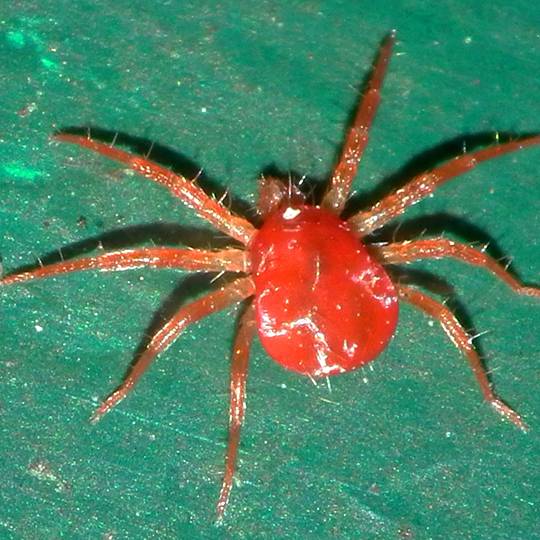
Difficult to notice with the naked eye, mites are minuscule members of the arachnid family, although they often get labeled as insects. These tiny pests are found on outdoor plants, shrubs, and trees, and even on indoor greenery. Not only do they cause damage by feeding on foliage and sucking out necessary nutrients, they can also carry dangerous diseases. Some types of mites include spider, spruce, two-spotted, and European red.
The Mightiest of Mites
Several kinds of mites can cause damage to your trees, but the most common one is the spider mite. These eight-legged arachnids get their name from being closely related to spiders and ticks. Minute in size, spider mites range from only 1/20 to 1/50 of an inch and have bodies with two segments. Depending on the species–and even the season–their coloring can vary from green to red or yellow.
Signs and Symptoms of Mites
Visible signs that mites may be making a meal out of your foliage:
- Brown wilted leaves
- Curled yellow leaves
- Foliage that is speckled
- Leaf drop
- Tiny web-like structures
- Mottled or discolored needles on conifers like pine, spruce, and hemlock (Needle loss can occur in severe infestations)
Mite Prevention
Detecting mites before they cause noticeable damage is the best way to keep your trees safe. If you suspect you may have a mite problem, do the white paper test to determine if they are present. This is done by shaking a branch or some leaves over a white sheet of paper–the mites can be seen as tiny black or brown moving specks. (They are easier to spot with a magnifying glass.)
Good maintenance. Healthy trees can better withstand infestations, and mites thrive on trees that are weak or under stress. Keep the foliage in your yard watered, fed, and properly pruned, and that’s half the battle.
Water power. Mite infestations tend to worsen in dry, dusty conditions. They also reproduce more rapidly in warmer, arid temperatures. Use a high-pressure hose or a hose attachment to thoroughly spray down an infested tree, making sure to get underneath the leaves as well. This will wash off mites and their eggs, plus get rid of the dusty conditions that contribute to outbreaks.
Chemical control. Miticides are chemical substances used to kill mites. There are many miticides available, some less toxic than others. Read the labels carefully to make sure it is safe to use on the tree type you wish to treat. You may need to reapply after a couple of weeks to get them all.
Predators. There are several natural enemies that feed on mites including ladybugs, pirate bugs, lacewing larvae, and even other kinds of mites. You can usually find predatory mites at home or garden centers, which you can then release in the areas that are infested with the harmful mites.
Need more assistance identifying, treating, and preventing mites and other pests? Contact Elite Tree Care today at 610-935-2279.
Need Help with Mites?
Call Elite Tree Care today at 610-935-2279 and let's talk about how we can help you with Mites and other Pennsylvania tree pests.
Get a Free Quote